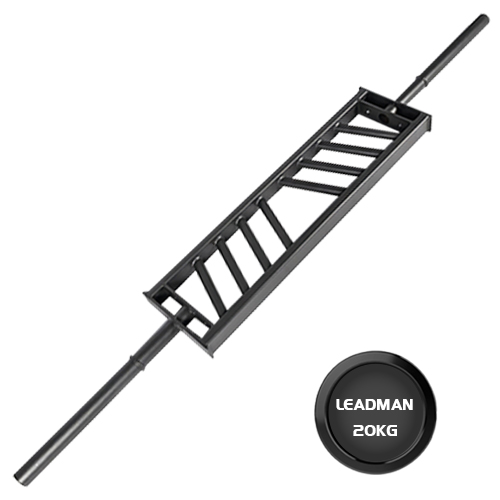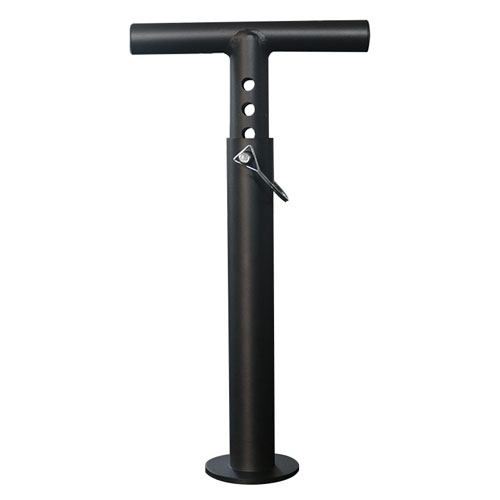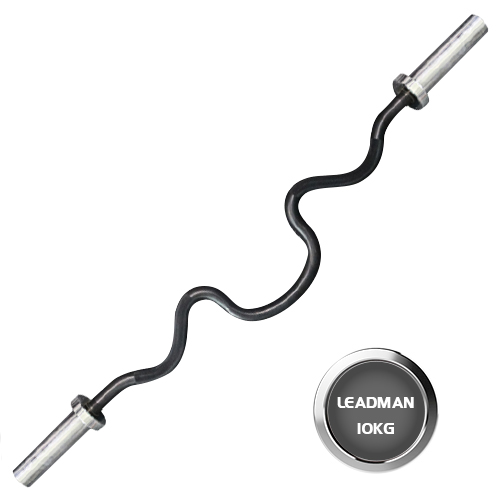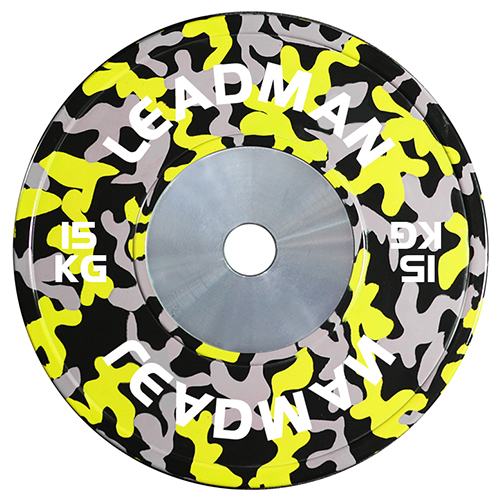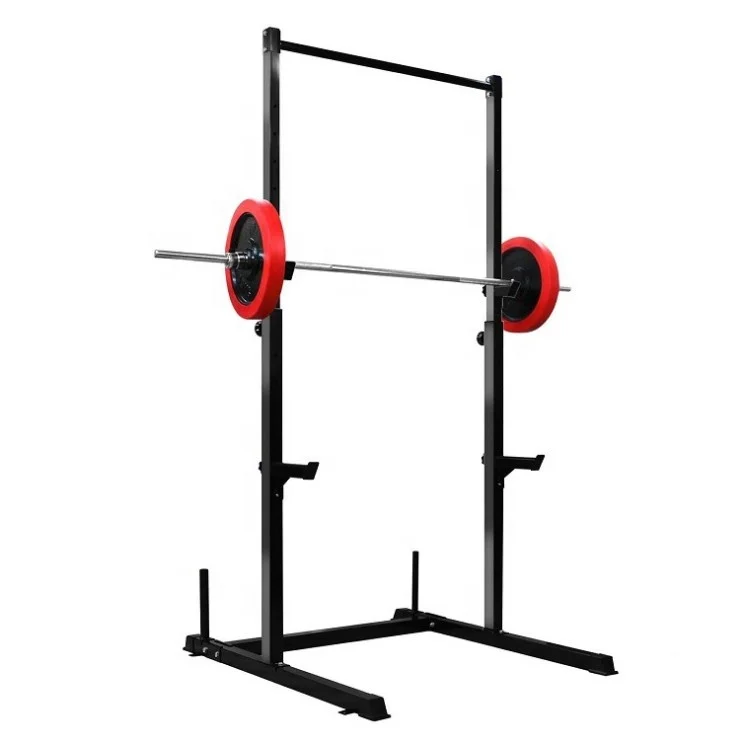Olympic Bumper Plates Vs. Powerlifting Bumper Plates: What's the Difference?
Whether you're a gym enthusiast, a CrossFit athlete, or a powerlifter, choosing the right bumper plates is crucial for your training effectiveness. There are two main types of bumper plates available: Olympic bumper plates and powerlifting bumper plates. These two types differ in design and intended use, so understanding the differences is essential for making an informed decision.
I. Design Matters: A Detailed Breakdown of Structural Differences
The design of a bumper plate directly influences its performance and safety during training. Olympic bumper plates and powerlifting bumper plates have some key design differences that contribute to their different uses.
1. Diameter: Subtle Variance Impacts Handling and Stability
Olympic Bumper Plates: Typically have a standard 45 cm diameter, perfectly matching standard Olympic barbells. This standard diameter is designed to ensure the plates slide smoothly on the barbell and withstand high-impact drops, ensuring training safety and stability.
Powerlifting Bumper Plates: Also typically have a standard 45 cm diameter, but may offer smaller diameter options, such as 43 cm or 44 cm, to accommodate certain powerlifting barbells. Some powerlifters prefer the smaller diameter because it makes the barbell easier to handle during squats and deadlifts, and they can better avoid the plates from touching the ground during competition, preventing rule violations.
2. Collars: The Anti-Slip Design Influences Safety and Handling
Olympic Bumper Plates: Usually have larger collars to prevent the plates from slipping on the barbell. These collars are often rounded, allowing the plates to easily slide on the barbell and withstand high-impact drops, ensuring training safety and stability. Larger collars also offer better protection for the barbell, preventing it from getting scratched or damaged during training.
Powerlifting Bumper Plates: Typically feature smaller collars to minimize the chance of contacting the ground during powerlifting competitions. These collars are usually square or rectangular to provide greater stability. Powerlifters choose smaller collars because they make the barbell easier to handle during squats and deadlifts and reduce the risk of the plates touching the ground during competition.
3. Marking: Clear Identification Enhances Training Efficiency
Olympic Bumper Plates: Usually have their weight marked on the plate and use various colors to differentiate different weight levels. For example, 2.5 kg plates are typically blue, 5 kg plates are usually yellow, 10 kg plates are often red, and so on. This helps athletes quickly identify different weights, improving training efficiency.
Powerlifting Bumper Plates: Usually also have their weight marked, but may not use colors to differentiate weight levels. Some powerlifting plates use numbers or letters to identify weight, such as "2.5KG", "5KG", etc.
4. Materials: The Foundation for Durability and Sound
Olympic Bumper Plates: Typically made of steel or cast iron, and may include rubber or other material coatings to increase durability and reduce noise. Rubber coatings effectively absorb impact, reducing the noise generated when the plates are dropped, providing a more comfortable training environment for athletes. Steel offers excellent durability and impact resistance, capable of withstanding frequent drops and impacts, meeting the demands of high-intensity training.
Powerlifting Bumper Plates: Typically made from high-quality steel and may have an anti-corrosion coating to prevent rust. High-quality steel can withstand heavy loads, ensuring the plates' durability and reliability.
II. Purpose Driven: Exploring the Training Differences
The design differences between Olympic bumper plates and powerlifting bumper plates directly contribute to their distinct uses in training.
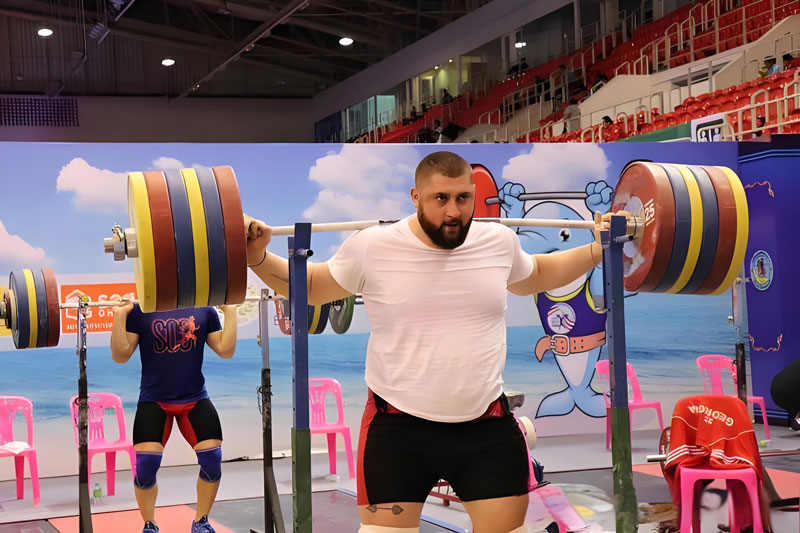
1. Training Style: Olympic Weightlifting vs. Powerlifting
Olympic Bumper Plates: Primarily used in Olympic weightlifting, encompassing exercises like the snatch, clean and jerk, and various auxiliary movements. Olympic weightlifting emphasizes explosive power and speed, requiring athletes to lift the barbell quickly. Therefore, Olympic bumper plates are designed to withstand high-impact drops, ensuring training safety and stability.
Powerlifting Bumper Plates: Primarily used in powerlifting, involving squats, bench press, and deadlifts. Powerlifting focuses on lifting the maximum possible weight, requiring athletes to lift the barbell steadily while maintaining good form. Therefore, powerlifting plates are designed to provide sufficient stability and handling, meeting the demands of powerlifting athletes.
2. Training Intensity: High Impact vs. Controlled
Olympic Bumper Plates: Typically used in high-intensity training because they can withstand frequent drops and impacts. Olympic weightlifters frequently engage in high-intensity training, involving dropping the barbell repeatedly, making the durability and safety of Olympic bumper plates essential.
Powerlifting Bumper Plates: Usually used in lower-intensity training, as they might not be as durable as Olympic bumper plates. Powerlifters typically perform lower-intensity training because they focus on lifting maximum weights while maintaining proper form. As a result, the durability of powerlifting plates is less crucial than in Olympic weightlifting.
3. Competition Standards: International Event Guidelines
Olympic Bumper Plates: Used in various international and domestic Olympic weightlifting competitions. According to the International Weightlifting Federation (IWF) regulations, all Olympic weightlifting competitions must use standard Olympic bumper plates.
Powerlifting Bumper Plates: Used in various international and domestic powerlifting competitions. Organizations like the International Powerlifting Federation (IPF) and USA Powerlifting (USAPL) have their own powerlifting competition rules, including specifications for bumper plates, such as size, weight, and materials.
III. Pros and Cons: Analyzing the Advantages and Disadvantages
Olympic Bumper Plates:
Pros:
Durability: Olympic bumper plates can typically withstand frequent drops and impacts, making them ideal for high-intensity training. For example, in CrossFit training, athletes often perform high-intensity workouts that involve dropping the barbell repeatedly, and Olympic bumper plates' durability ensures training safety and effectiveness.
Versatility: Olympic bumper plates can be used in various training styles, including Olympic weightlifting, powerlifting, and CrossFit, meeting diverse training needs. For instance, in mixed training, athletes may need to perform squats, deadlifts, and other powerlifting exercises while also doing snatches, clean and jerks, and other Olympic weightlifting movements. Olympic bumper plates can accommodate these diverse training requirements.
Safety: The larger collars of Olympic bumper plates prevent them from slipping on the barbell, enhancing safety and reducing training risks. For beginner athletes, safety is crucial, and Olympic bumper plates effectively mitigate training risks, giving athletes greater confidence during their workouts.
Cons:
Price: Olympic bumper plates typically cost more than powerlifting plates because they require more durable materials and complex manufacturing processes. For athletes with limited budgets, Olympic bumper plates might not be the best option.
Weight: Olympic bumper plates are often heavier than powerlifting plates, making them more challenging to handle, especially for beginner athletes. For example, for a beginner female athlete, handling a 20 kg Olympic bumper plate might be challenging, whereas a 20 kg powerlifting plate might be relatively easier.
Noise: Olympic bumper plates generate more noise when dropped, which can be disruptive, particularly in gyms that prioritize a quiet training environment.
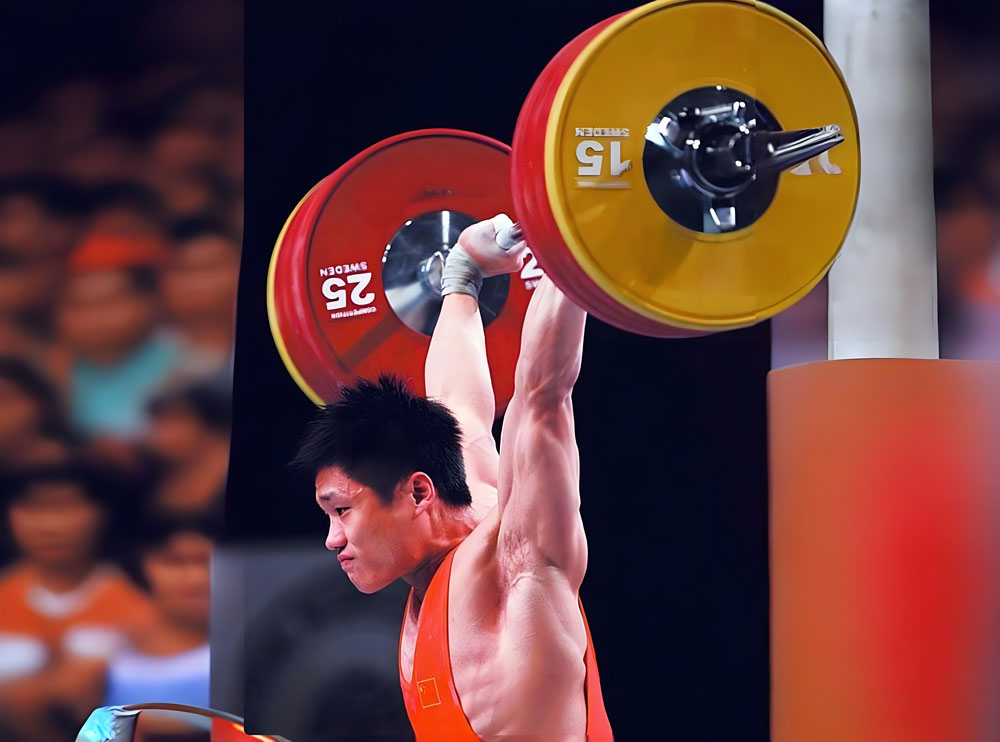
Powerlifting Bumper Plates:
Pros:
Price: Powerlifting bumper plates typically cost less than Olympic bumper plates because they use simpler materials and manufacturing processes. Powerlifting plates are an excellent option for athletes with limited budgets.
Weight: Powerlifting plates are often lighter than Olympic plates, making them easier to handle, especially for beginner athletes. For example, for a beginner female athlete, handling a 20 kg powerlifting plate might be relatively easier than handling a 20 kg Olympic plate.
Noise: Powerlifting bumper plates make less noise when dropped, making them more suitable for gyms that prioritize a quiet training environment.
Cons:
Durability: Powerlifting bumper plates might not be as durable as Olympic plates, making them unsuitable for high-intensity training that involves frequent drops and impacts. For example, in CrossFit training, athletes often perform high-intensity workouts that involve dropping the barbell repeatedly, and powerlifting plates might not withstand such high-intensity training.
Versatility: Powerlifting bumper plates might not be suitable for all training styles, such as Olympic weightlifting, because they are not designed to withstand high-impact drops. For example, performing snatches, clean and jerks, and other Olympic weightlifting movements might not be feasible with powerlifting plates.
Safety: The smaller collars of powerlifting plates can cause them to slip on the barbell, reducing safety and increasing training risks. For beginner athletes, safety is crucial, and powerlifting plates might not offer sufficient safety, increasing training risks.
IV. Making the Right Choice: Personal Needs Dictate the Best Option
Choosing the right bumper plates depends on your training goals, budget, and personal preferences.
If you primarily train in Olympic weightlifting or CrossFit, Olympic bumper plates are the best choice. The durability and versatility of Olympic bumper plates meet the demands of high-intensity training and ensure training safety and effectiveness.
If you primarily train in powerlifting, powerlifting bumper plates are the best option. Powerlifting plate design better suits the needs of powerlifting athletes, providing greater stability and handling, helping athletes lift maximum weights while maintaining good form.
If you have a limited budget, powerlifting plates might be a good option. Powerlifting plates are typically less expensive than Olympic plates, meeting the needs of athletes with limited budgets.
If you require more durable plates, Olympic bumper plates are the better choice. The durability of Olympic plates allows them to withstand high-impact drops, making them suitable for athletes who frequently perform high-intensity training, such as CrossFit athletes.
V. Conclusion: Informed Decisions for a Successful Fitness Journey
Olympic bumper plates and powerlifting bumper plates are both high-quality options, each best suited for different training goals and needs.
Olympic bumper plates are better suited for high-intensity training, such as Olympic weightlifting and CrossFit, as they can withstand frequent drops and impacts, ensuring training safety and effectiveness.
Powerlifting bumper plates are better suited for powerlifting training as they provide sufficient stability and handling to meet the demands of powerlifting athletes.
Choosing the right bumper plates will help you achieve your fitness goals and have a safe training experience. Before making a decision, carefully consider your training goals, budget, and personal preferences and make an informed choice.

